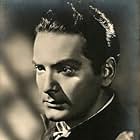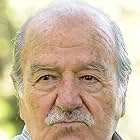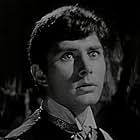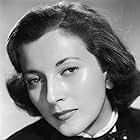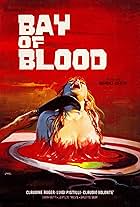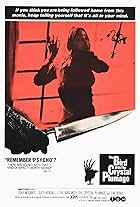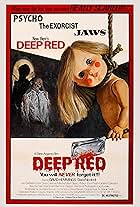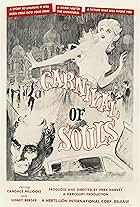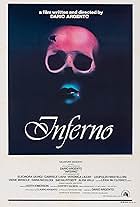IMDb RATING
7.1/10
18K
YOUR RATING
Decades after being executed for witchcraft, vengeful Princess Asa Vajda and her fiendish servant are resurrected and begin a bloody campaign to possess the body of Asa Vajda's beautiful loo... Read allDecades after being executed for witchcraft, vengeful Princess Asa Vajda and her fiendish servant are resurrected and begin a bloody campaign to possess the body of Asa Vajda's beautiful look-alike descendant Princess Katia.Decades after being executed for witchcraft, vengeful Princess Asa Vajda and her fiendish servant are resurrected and begin a bloody campaign to possess the body of Asa Vajda's beautiful look-alike descendant Princess Katia.
- Awards
- 1 win & 1 nomination
Barbara Steele
- Princess Asa Vajda
- (as Barbara Steel)
- …
Giuseppe Addobbati
- Priest
- (uncredited)
Fernando Cajati
- Crucifixion Torturer
- (uncredited)
Valentina Cortese
- Tavern Girl
- (uncredited)
Angelo Galassi
- Tavern Keeper
- (uncredited)
Nando Gazzolo
- Narrator
- (voice)
- (uncredited)
Renato Montalbano
- Spectator
- (uncredited)
Storyline
Did you know
- TriviaMario Bava and Barbara Steele had a difficult working relationship. She sometimes refused to come to set because she did not like her wig or the fact that her cleavage would be shown. One time she refused because she believed Bava would force her to appear nude. She admits that she was difficult due to her inexperience and inability to understand Italian.
- GoofsIn the opening credits, Barbara Steele's name is misspelled as Barbara Steel.
- Quotes
Princess Asa Vajda: You, too, can feel the joy and happiness of hating.
- Crazy creditsFor "The Mask of Satan," the English language version prepared in Italy, Barbara Steele's name is listed as "Barbara Steel" on the trailer and on the credits of the film itself.
- Alternate versionsThe full list of differences between the 83-minute original cut and the 80-minute AIP cut:
- A different English-language dub, and a new score by Les Baxter.
- An added pre-text crawl warning the audience about the film's content: "The producers of the picture you are about to see feel a moral obligation to warn you that it will shock you as no other film ever has. Because it could be very harmful to young and impressionable minds, it is restricted to only those over fourteen years of age."
- Alternate opening credits.
- A brief exchange between Katja and Constantine where he tells her their father has died is cut.
- A scene where Katja and Andrej talk in the garden is cut.
- An exchange between Katja and Andrej outside her room is cut.
- Kruvajan's death scene is cut down significantly to remove shots of his eye spurting blood.
- The scene were Prince Vajda reanimates and menaces Katja is trimmed.
- Vajda's death scene, particularly the close-ups of his head melting, is trimmed.
- Asa taunting Andrej before being burned at the stake is cut.
- Added closing credits.
- ConnectionsFeatured in I motorizzati (1962)
Featured review
La Maschera del Demonio/The Mask of Satan(1960) is the film that introduced audiences around the world to the cinema of Mario Bava. Responsible for being the first horror film to have a formidable evil female villain. Its about a dead witch who returns from the dead with her lover to terrorize the descendents of their executioners. Translitional picture that predates the broodish and moody style of Night of the Living Dead(1968). Tim Burton has cited this movie as one of his favorites.
After years as Assistent Director and Director of Photography, Bava was rewarded with his first full directorial assignment and the results are impressive. Mario Bava was a talented filmmaker with a love for the fine arts of Europe and Russian literature. He didn't direct full time until he was in his late 40s. Mario Bava's influences as a film director were Riccardo Freda and Freda and Fritz Lang. Nikolai Gogol is a writer that along with Edgar Allen Poe played a major influence on Bava's supernatural tales.
One theme that is present in The Mask of Satan(1960) is the decay and decline of a once happy and powerful family{more fully explored in Bava's later films of Black Sabbath(1963), Whip and the Body(1964), Lisa and the Devil(1974), and Shock(1977)}. Deals with the notion of the inescapability of fate that is an important theme in Bava's work. An example of this motif comes from Barbara Stelle with her line:"Here is the Very image of my life". Mario Bava was a fatalistic filmmaker who used imagery to convey his beliefs in destiny or fate. Part of his fatalistic style comes from him experiences and memories of WW2.
Some of the special effects are amazing for a film of this caliber. Mario Bava was a genius in creating special effects with only his creative soul and imagination. Makes one wonder what great special effects he could create with a modest budget. The gore effects although spread out in small pieces are gruesome for 1960. Proves that great special effects don't necessarily have to be done with mega dollars.
The opening scene of the execution of Asa is a stunning combination of atmosphere and violent imagery. Barbara Stelle along with Christopher Lee, Peter Cushing, and Vincent Price are some of the greatest icons in 1960s to 1970s horror films. Many movie makers in horror films were influenced by the opening scene. Certain parts of the atmospheric opening can be seen as one inspiration for the prologue of Lucio Fulci's L'Aldila/The Beyond(1981). A special moment in horror cinema.
The Mask of Satan(1960) came about as a result of the success of the Curse of Frankenstein(1957) and Horror of Dracula(1958) in Italy. Mixes the old fashion horror of Univerisal Studios with the graphic violence of Hammer horror. The Hammer and Universal horror films are responsible for the birth of horror in Post war Italian cinema. There are a couple of scenes that are obviously influenced by Horror of Dracula(1958). The fact that Mario Bava did this based on the success of Horror of Dracula(1958) must have influenced Terence Fisher to respond to directing Dracula:Prince of Darkness(1966).
The Mask of Satan(1960) isn't interested in plot and story as much as atmosphere and painting style visuals. Mario Bava took the barebones material of the film and turned it into something magnificent. Mario Bava's direction has the look of a great artist. Setting up atmosphere, dread, mood, and terror were some of Bava's strengths. His experiences as a cinematographer really pays dividends in Bava's direction.
A significant influence was placed on La Maschera del Demonio by the first Italian horror film of the sound era, I Vamipri(1956). A few references are made to I Vampiri(1956) especially in the discovery of a dead body near the river bank. Also, the aging effect in Mask of Satan(1960) comes from Bava's work on I Vampiri. Italian filmmaker, Riccardo Freda was the major influence behind Bava's films and the main directorial mentor of Mario Bava. The romantic subplot of The Mask of Satan(1960) also derieves from I Vampiri(1956).
Has some of the best set designs in a low budget horror film. Mario Bava would use some of the set for his late 1960s horror classic Kill Baby Kill(1967). Amazing that Mario Bava could put together grandeur looking art and set designs with so little. He also contributed to the dazzling cinematography. Mario Bava used many of the film's motifs and themes for The Whip and the Body(1964).
La Maschera del Demonio/The Mask of Satan(1960) is based loosely on a short story by Gogol called the Viy. An interesting note on the making of The Mask of Satan(1960) is that Bava made changes thoughout production because of uncertainities about the screenplay. Its one of the best horror films of the last fifty years. The camera moves with a smooth feel typical of a Mario Bava phtographed feature. This is an item that many aspiring horror filmmakers should watch in order to see how a great horror film should be done.
After years as Assistent Director and Director of Photography, Bava was rewarded with his first full directorial assignment and the results are impressive. Mario Bava was a talented filmmaker with a love for the fine arts of Europe and Russian literature. He didn't direct full time until he was in his late 40s. Mario Bava's influences as a film director were Riccardo Freda and Freda and Fritz Lang. Nikolai Gogol is a writer that along with Edgar Allen Poe played a major influence on Bava's supernatural tales.
One theme that is present in The Mask of Satan(1960) is the decay and decline of a once happy and powerful family{more fully explored in Bava's later films of Black Sabbath(1963), Whip and the Body(1964), Lisa and the Devil(1974), and Shock(1977)}. Deals with the notion of the inescapability of fate that is an important theme in Bava's work. An example of this motif comes from Barbara Stelle with her line:"Here is the Very image of my life". Mario Bava was a fatalistic filmmaker who used imagery to convey his beliefs in destiny or fate. Part of his fatalistic style comes from him experiences and memories of WW2.
Some of the special effects are amazing for a film of this caliber. Mario Bava was a genius in creating special effects with only his creative soul and imagination. Makes one wonder what great special effects he could create with a modest budget. The gore effects although spread out in small pieces are gruesome for 1960. Proves that great special effects don't necessarily have to be done with mega dollars.
The opening scene of the execution of Asa is a stunning combination of atmosphere and violent imagery. Barbara Stelle along with Christopher Lee, Peter Cushing, and Vincent Price are some of the greatest icons in 1960s to 1970s horror films. Many movie makers in horror films were influenced by the opening scene. Certain parts of the atmospheric opening can be seen as one inspiration for the prologue of Lucio Fulci's L'Aldila/The Beyond(1981). A special moment in horror cinema.
The Mask of Satan(1960) came about as a result of the success of the Curse of Frankenstein(1957) and Horror of Dracula(1958) in Italy. Mixes the old fashion horror of Univerisal Studios with the graphic violence of Hammer horror. The Hammer and Universal horror films are responsible for the birth of horror in Post war Italian cinema. There are a couple of scenes that are obviously influenced by Horror of Dracula(1958). The fact that Mario Bava did this based on the success of Horror of Dracula(1958) must have influenced Terence Fisher to respond to directing Dracula:Prince of Darkness(1966).
The Mask of Satan(1960) isn't interested in plot and story as much as atmosphere and painting style visuals. Mario Bava took the barebones material of the film and turned it into something magnificent. Mario Bava's direction has the look of a great artist. Setting up atmosphere, dread, mood, and terror were some of Bava's strengths. His experiences as a cinematographer really pays dividends in Bava's direction.
A significant influence was placed on La Maschera del Demonio by the first Italian horror film of the sound era, I Vamipri(1956). A few references are made to I Vampiri(1956) especially in the discovery of a dead body near the river bank. Also, the aging effect in Mask of Satan(1960) comes from Bava's work on I Vampiri. Italian filmmaker, Riccardo Freda was the major influence behind Bava's films and the main directorial mentor of Mario Bava. The romantic subplot of The Mask of Satan(1960) also derieves from I Vampiri(1956).
Has some of the best set designs in a low budget horror film. Mario Bava would use some of the set for his late 1960s horror classic Kill Baby Kill(1967). Amazing that Mario Bava could put together grandeur looking art and set designs with so little. He also contributed to the dazzling cinematography. Mario Bava used many of the film's motifs and themes for The Whip and the Body(1964).
La Maschera del Demonio/The Mask of Satan(1960) is based loosely on a short story by Gogol called the Viy. An interesting note on the making of The Mask of Satan(1960) is that Bava made changes thoughout production because of uncertainities about the screenplay. Its one of the best horror films of the last fifty years. The camera moves with a smooth feel typical of a Mario Bava phtographed feature. This is an item that many aspiring horror filmmakers should watch in order to see how a great horror film should be done.
Details
- Runtime1 hour 27 minutes
- Color
- Sound mix
- Aspect ratio
- 1.66 : 1
Contribute to this page
Suggest an edit or add missing content













